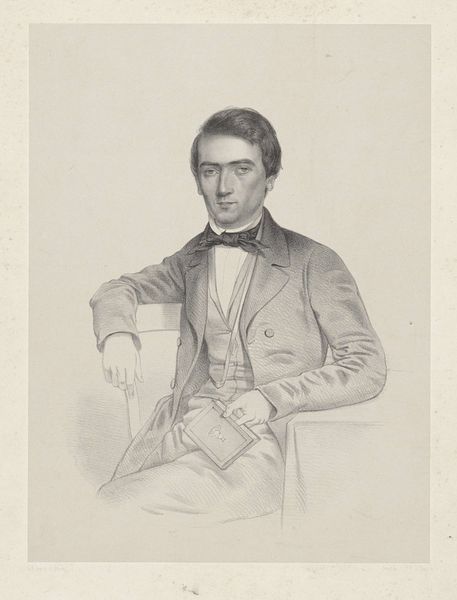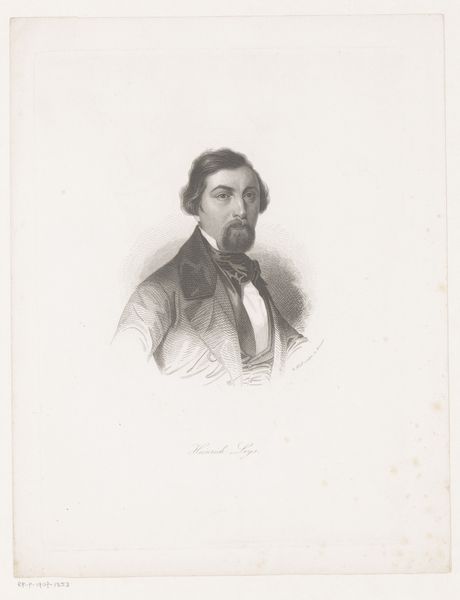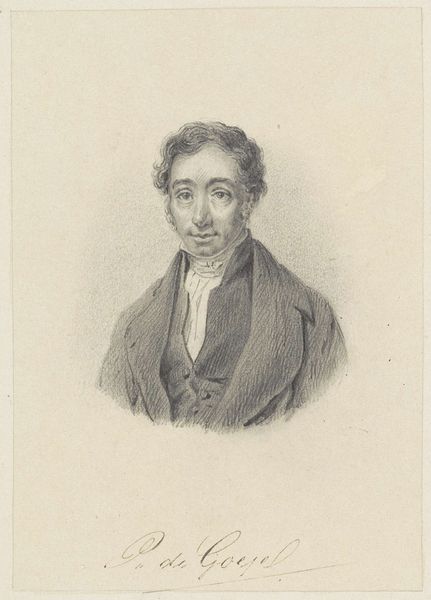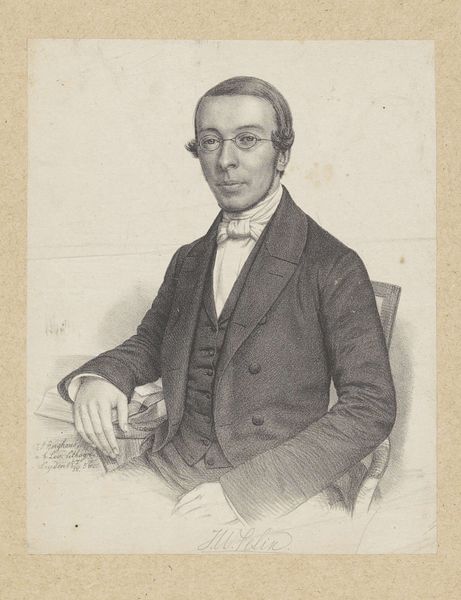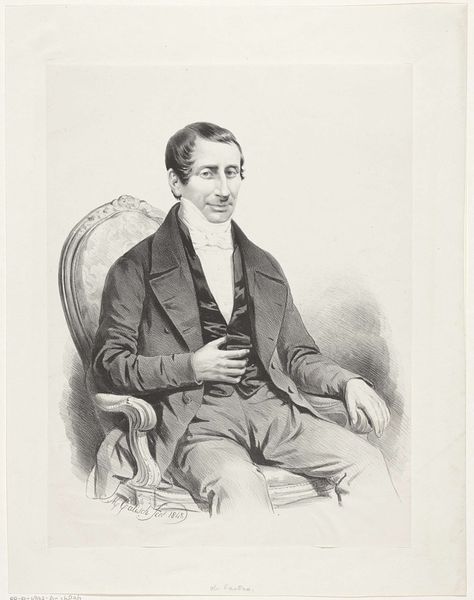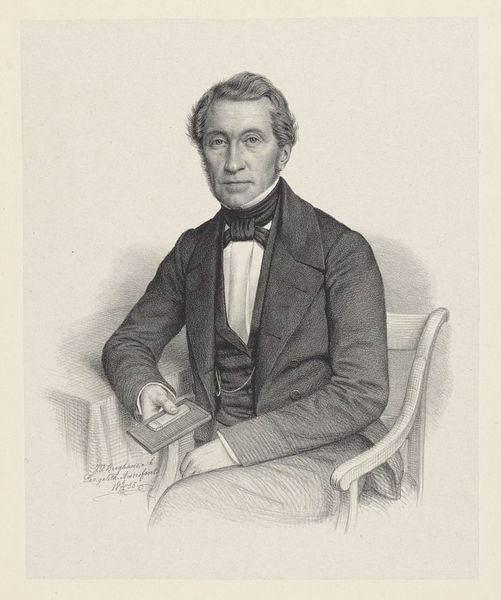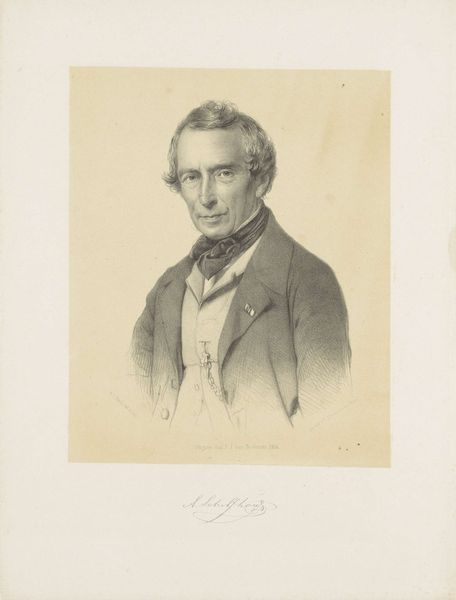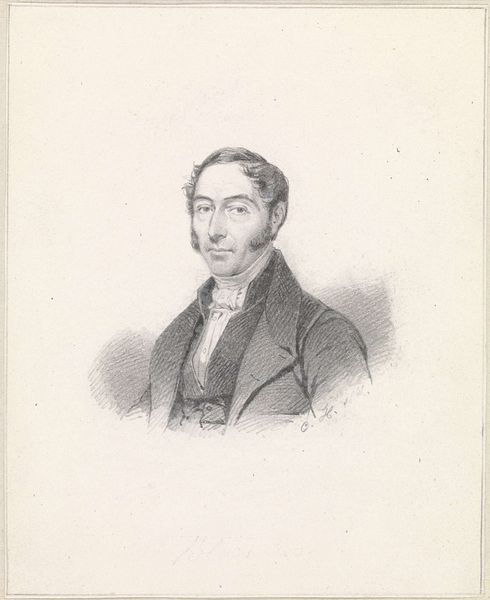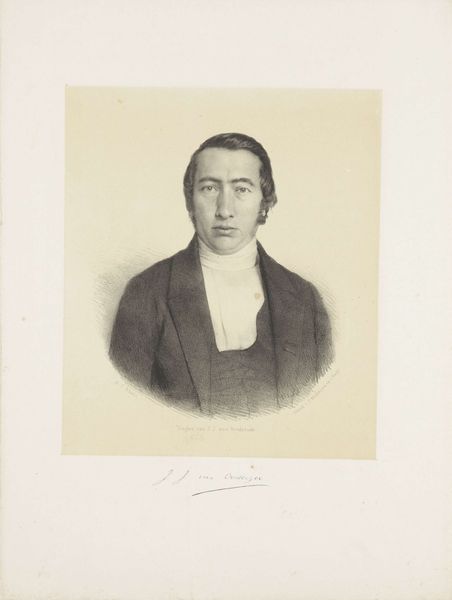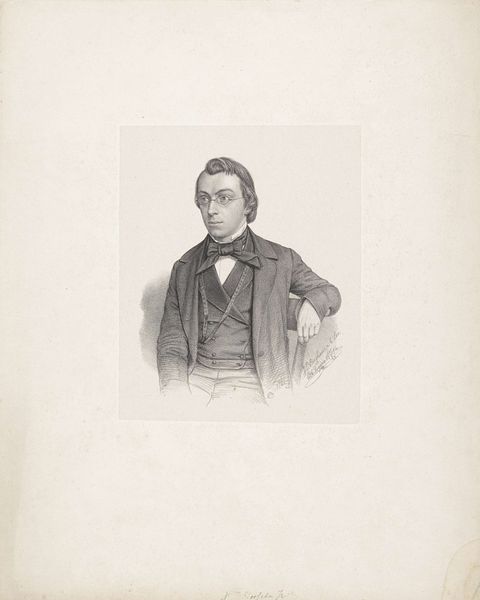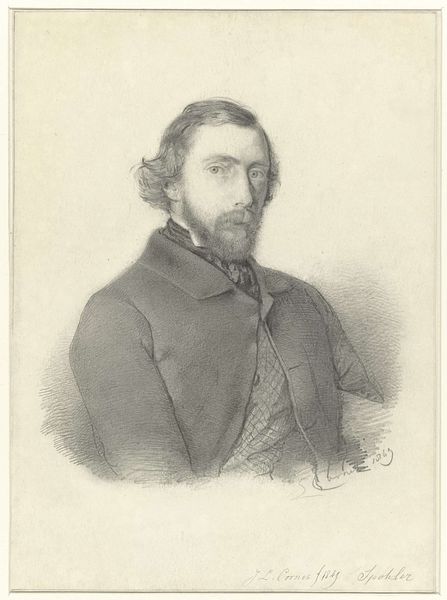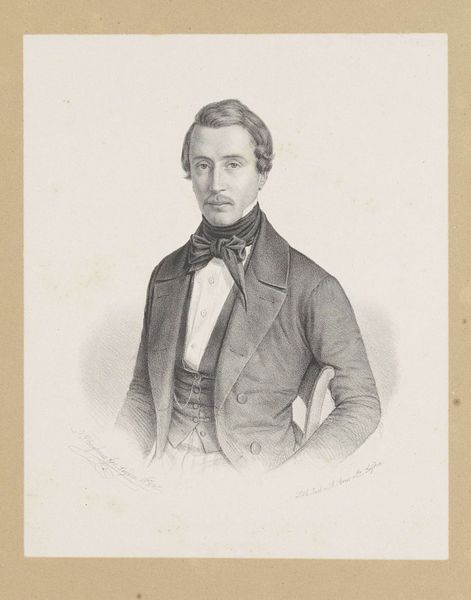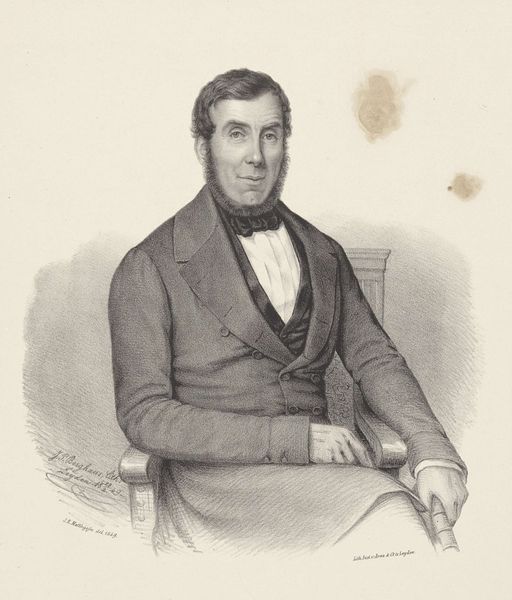
Dimensions: height 331 mm, width 254 mm
Copyright: Rijks Museum: Open Domain
Editor: This is a portrait of Coenraad Kerbert, possibly from 1855, by Johann Peter Berghaus. It’s a pencil drawing, and I find the subject's expression quite intense. What do you see in this piece that stands out, particularly from a historical perspective? Curator: Beyond the intensity you noted, consider the historical and social context. In the mid-19th century, portraiture was often used to reinforce social standing. Does Kerbert's depiction challenge or reinforce societal expectations? Consider the gaze, the clothing, the very medium itself. Does it hint at anything beyond a simple representation? Editor: Hmm, I see what you mean. The stiff pose and dark suit are typical for the time, but there's something almost… satirical in the way he's drawn. Almost a caricature. How might we interpret that from a cultural studies perspective? Curator: Exactly! The slight exaggeration could be a commentary on the rigid social norms of the period. Could Berghaus be subtly critiquing the bourgeoisie through this "fine art portrait"? And consider Berghaus as the artist too - what’s his relationship to Kerbert? Do we know their backgrounds? Perhaps exploring the intersections of their identities can shed light on Berghaus’ motivations. Editor: So, this isn't just a picture of a man; it’s potentially a statement on the social climate. But is that reading too much into it? What if it’s just a poor likeness? Curator: That's a valid counterpoint! But by examining it through these different theoretical lenses, we open ourselves to multiple interpretations and consider the drawing within a web of socio-political factors. Editor: I see, so it's about broadening our understanding by considering possible layers of meaning. Thank you; that’s given me a lot to think about. Curator: And for me as well. Looking closely at seemingly straightforward art always opens fascinating discussions.
Comments
No comments
Be the first to comment and join the conversation on the ultimate creative platform.
